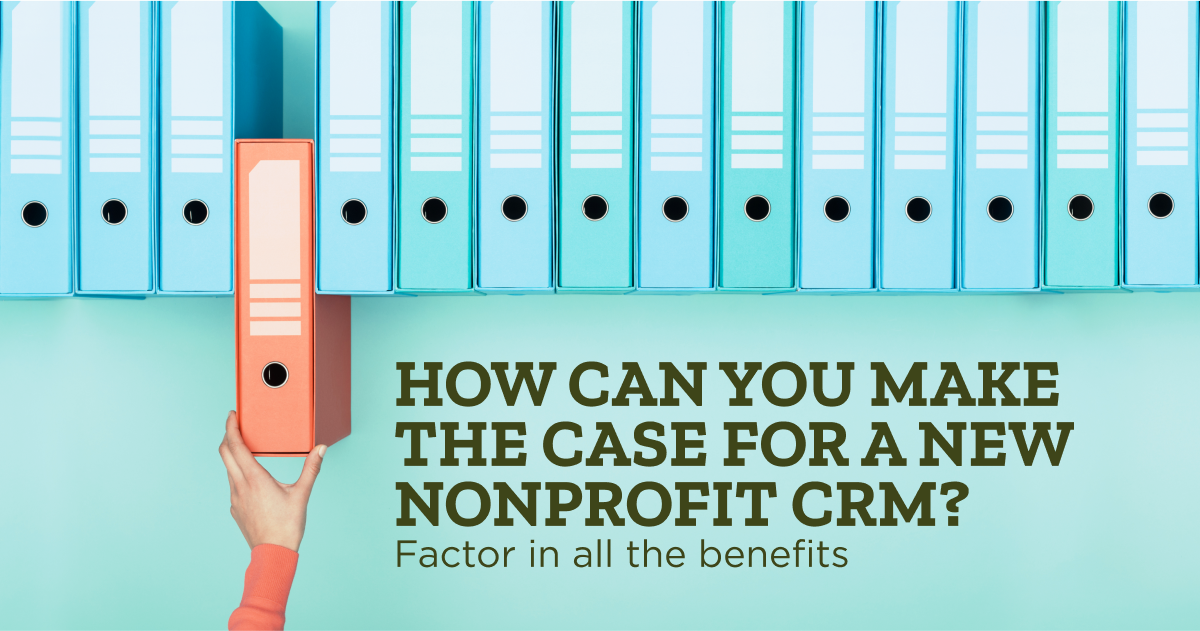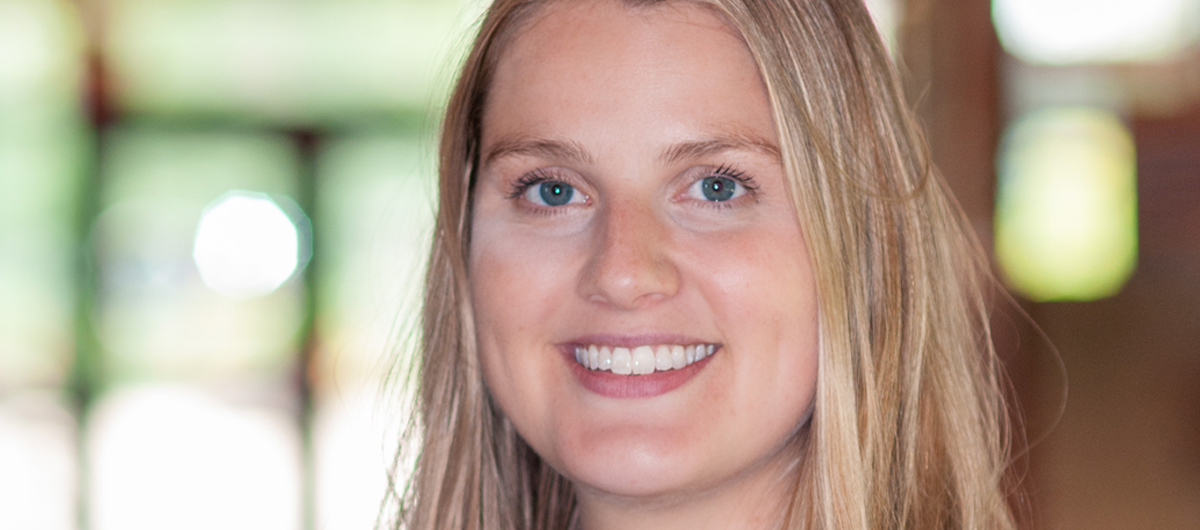As a fundraising leader, you know that a sophisticated CRM is an essential component of a high-performing development team. A good system can help you manage relationships with your constituents, set goals based on data-driven insights, and streamline your operations — all while maximizing your nonprofit’s impact in your community.
Even so, you may face an uphill battle when convincing executive leaders that a new system is worth the investment. This is especially true if you consistently reach or exceed your fundraising targets and are able to provide leaders with regular performance reports showing progress toward your goals.
But executives may not realize that the reports they review each month are the result of many hours of manual work. Likewise, they may not question whether or not your organization could set more ambitious goals if you were able to dig deeper into your data.
That’s why it’s important to understand — and demonstrate — the full value that switching to a new nonprofit CRM can bring to your organization. Here’s a look at the key benefits you can expect to gain by implementing a new solution.
Gather (and Maintain) Better Donor Data
Implementing a new CRM is like moving to a new house. Diving into the process of making the new space your own with elements like fresh paint and modern flooring is fun. But if you don’t take time to evaluate your current belongings and decide what to take, what to purge, and what to replace, you may not achieve the beautiful end-result you’re hoping for.
In the same way, you shouldn’t simply migrate all your data from one system to another as a matter of course. Nor should you continue to use the same processes and procedures you’ve always used. A CRM implementation offers a unique chance to step back, assess, and strengthen your current operations.
Evaluate the Data You Have and the Data You Need
We’ve said it before, and we’ll say it again: Good data is sexy. In fact, it’s no exaggeration to say that your data is the bedrock upon which your fundraising program is built.
That’s why it’s extremely important to carve out time in the implementation process to take a critical look at:
- What you already know about your donors — and decide which data points need to migrate to the new system
- What you need to know about your donors — and identify the best way to begin gathering and tracking this information
- The types and quality of data you’re storing in other places (e.g. email and event).
At a minimum, you’ll want to capture:
- Giving data (amounts, dates, gift types) so the new CRM has the information it needs to produce donor acquisition, retention, and growth rate reports
- Communication preferences that allow you to tailor your outreach plan
- Accurate contact information (e.g. address, email, phone number)
- Interests and affinities to easily customize engagement and solicitation strategies
- Ratings and wealth scores for prospect research purposes
- Key relationships (familial; employer) to see a big picture view of donor connections
- Proposal and gift expectancy information to assist with effective prospect management
Optimize Data-Related Processes and Procedures
Along similar lines, a CRM implementation presents the perfect opportunity to shore up your operational processes and procedures. Rather than continue to do business as you always have, take time to ask:
- Which processes work well? Which ones should we reevaluate?
- What are the pain points that frustrate our team and slow us down?
- Are we duplicating efforts anywhere?
- Is there a better way to accomplish key tasks?
- Are we tracking the right things? Do our codes and tracking mechanisms make sense?
- Are we automating everything we possibly can?
Of course, it can be challenging to optimize these areas on your own. An experienced consultant can guide you through this critical analysis and help you make the most of a new CRM’s capabilities.
Improve (and Forecast) Fundraising Results
Systems don’t raise money — people do. However, effective technology supports effective fundraising by freeing your team to focus on the activities that drive results.
For instance:
- Development officers often spend significant amounts of time combing through giving reports and searching Linkedin to identify potential prospects. Modern CRMs are increasingly equipped with advanced analytical tools that elevate the best prospects based on a combination of predictive and behavioral analysis.
- Planned giving programs offer tremendous potential for nonprofits to secure significant gifts. But it’s difficult to be intentional and proactive about managing these programs using spreadsheets alone. A good CRM can notify gift officers that it’s time to reach out with a thoughtful gesture (e.g. send flowers, schedule lunch) to foster ongoing goodwill. It can also serve as a central repository for important documentation regarding the donor’s ultimate gift intentions.
- Traditional giving reports tend to focus on comparing how you’re doing this year versus previous years. Truth be told, that’s not the best way to measure success. A modern CRM can help your team set predictive, data-driven goals based on where you’re going, not where you’ve been. Customized reports and dashboards illuminate whether or not you’re making appropriate progress toward those goals.
A high-functioning CRM enables your team to stay laser-focused on the right prospects and the right goals.
Enhance Your Nonprofit’s Culture of Philanthropy
Another benefit of introducing a robust CRM at your nonprofit is that it enhances communication and collaboration across departments. This is helpful in building and promoting a strong culture of philanthropy in which everyone plays a role in nurturing the relationships that matter to your organization.
For example, you might:
- Enable team members across the organization to submit contact reports regarding interactions they have with (and information they learn about) donors
- Ensure your CRM integrates with the systems other departments use so everyone has access to up-to-date, accurate information
- Provide mailing lists and contact information to allow colleagues to reach out to constituents with ease
We’re not suggesting you give every employee in your organization carte blanche access to confidential donor records. However, to reduce inconsistencies and improve your donor’s overall experience with your nonprofit, it’s essential to operate from a single source of truth as much as possible.
Mitigate the Impact of Employee Turnover
Building positive, fruitful relationships with donors can sometimes take years. And every time development officers leave your organization, you risk losing access to the valuable information essential to moving the relationship forward.
Implementing an easy-to-use, intuitive CRM — and requiring development officers to use it — is the best way to mitigate this risk. A good system can prompt your team members to enter contact reports, proposals, and synopses of giving conversations in a timely manner. As a result, if you do experience turnover, the next development officer you hire can pick up right where the previous employee left off.
Your Nonprofit Needs — and Deserves — a High-Functioning CRM
No matter how talented and capable your team is, they need the right tools to perform the requirements of their job. After all, no one would expect a surgeon to operate without a scalpel or a construction crew to build a house without a blueprint.
Your team needs the data and technological support that will enable them to do their jobs, too.
Investing in a new nonprofit CRM is a significant expense that can be difficult to justify. However, the opportunity cost of not achieving your full potential far outweighs the initial impact to your organization’s bottom line.
You don’t have to make the case for a high-functioning CRM on your own. We’d be glad to help you see — and seize — the possibilities. Just reach out.






